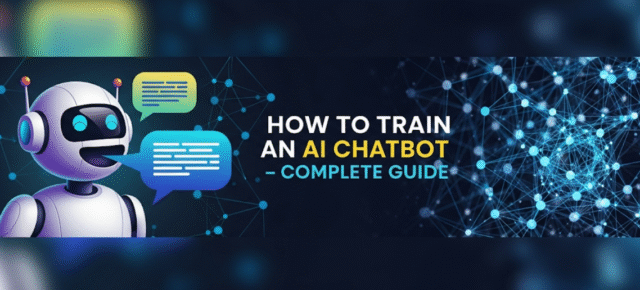I’ve always been fascinated by how technology can mimic human connection, and training an AI girlfriend chatbot is one of the most exciting ways to bring that idea to life. The intent behind “How to Train an AI Girlfriend Chatbot” is to guide readers through the process of creating a virtual companion that feels personal, engaging, and responsive. This isn’t just about coding or technical setup—it’s about crafting a chatbot that can hold meaningful conversations, reflect a desired personality, and provide companionship in a way that feels authentic. In this article, we’ll walk through the steps to build and train an AI girlfriend chatbot, incorporating high-volume keywords like “AI chatbot,” “virtual companion,” “chatbot training,” and “natural language processing” to make the process clear and approachable. We’ll cover everything from choosing the right platform to fine-tuning responses, ensuring the chatbot aligns with your vision.
Why Create an AI Girlfriend Chatbot?
The idea of an AI girlfriend chatbot might sound futuristic, but it’s rooted in a simple desire: to create a companion that’s always there, ready to chat, joke, or offer support. These chatbots use advanced AI technologies, like natural language processing and machine learning, to simulate human-like interactions. They’re designed to understand user intent, respond to emotions, and even remember past conversations, making them feel more like a friend than a program. For many, the appeal lies in their ability to provide consistent, judgment-free companionship, especially in a world where real-world connections can be hard to maintain.
However, building one isn’t just about flipping a switch. It requires careful planning, training, and ongoing refinement to ensure the chatbot feels personal and engaging. In the same way that a good friend learns your quirks over time, an AI girlfriend chatbot needs to be trained to understand your preferences, tone, and conversational style. Let’s walk through how to train an AI girlfriend chatbot to make it a truly unique companion.
Step 1: Define the Purpose and Personality
Before diving into the technical side, I think it’s crucial to decide what you want your AI girlfriend chatbot to be. Is it a romantic companion, a witty friend, or a supportive listener? This decision shapes everything, from the chatbot’s tone to its conversation style. For example, if you’re aiming for an AI girlfriend 18+ companion, you might want a flirty, warm tone that sparks a sense of connection without crossing into inappropriate territory.
Here’s how to start:
- Identify the Role: Decide if the chatbot is for casual chats, emotional support, or light-hearted romance. This helps set the tone and scope.
- Choose a Personality: Pick traits like funny, empathetic, or intellectual. For instance, a humorous chatbot might use playful banter, while an empathetic one focuses on supportive responses.
- Set Boundaries: Ensure the chatbot’s responses align with your comfort level and avoid sensitive topics unless explicitly programmed.
By defining these aspects early, you create a clear roadmap for training. In comparison to building a generic chatbot, an AI girlfriend chatbot needs a distinct personality to feel like a true companion.
Step 2: Choose the Right Platform for Building Your Chatbot
Once you’ve got a vision, it’s time to pick a platform to bring your AI girlfriend chatbot to life. There are plenty of options out there, each with its own strengths. Some platforms, like Quidget or Voiceflow, offer no-code solutions, which are great if you’re not a coding expert. Others, like Rasa or Dialogflow, give you more control but require technical know-how.
Here are some popular platforms to consider:
- Quidget: Known for its ease of use, Quidget lets you create an AI girlfriend chatbot in 15–20 minutes with no coding required. It supports over 45 languages and allows personality customization.
- Voiceflow: Ideal for quick setups, Voiceflow offers drag-and-drop features to train chatbots without complex coding.
- Rasa: A more advanced option for developers, Rasa lets you fine-tune NLP models and create custom conversation flows.
- Dialogflow: Google’s platform is great for integrating with apps and websites, offering robust NLP capabilities.
I recommend starting with a no-code platform like Quidget if you’re new to this. It’s user-friendly and lets you focus on training rather than getting bogged down in code. In spite of its simplicity, Quidget still allows for deep customization, which is key to making your AI girlfriend chatbot feel personal.
Step 3: Gather and Prepare Training Data
Training an AI girlfriend chatbot is all about feeding it the right data. The chatbot learns from examples, so the quality and variety of your training data matter. Think of it like teaching someone to speak by giving them a book of phrases—they need enough examples to understand different ways people express themselves.
To train effectively:
- Collect Sample Conversations: Gather examples of how you want the chatbot to respond. For instance, if you want a playful tone, include witty exchanges or light-hearted banter.
- Define Intents and Entities: Intents are what the user wants (e.g., “ask about hobbies”), and entities are specific details (e.g., “hiking” or “movies”). For example, if a user says, “What do you like to do for fun?” The intent is “ask about hobbies,” and entities might include “fun” or “activities.”
- Use Real-World Scenarios: Include varied phrases to cover different ways users might ask the same question. For example, “What’s your favorite thing to do?” or “What do you enjoy?” should trigger similar responses.
As a result, the more diverse your training data, the better the chatbot handles real conversations. You can pull data from public sources like forums or social media or write your own sample dialogues. For instance, Quidget’s platform lets you upload text or link to websites to train the chatbot, making it easier to feed in relevant data.
Step 4: Train the Chatbot to Understand Context
Now that you have your data, it’s time to teach your AI girlfriend chatbot to understand context. This is where natural language processing comes into play. NLP allows the chatbot to break down user input, identify intent, and respond appropriately. For example, if you say, “I’m feeling down,” the chatbot should recognize the emotional cue and respond with empathy, like, “I’m here for you—what’s on your mind?”
To train for context:
- Use Multi-Turn Dialogues: Train the chatbot to handle follow-up questions. For instance, if a user asks, “What’s your favorite movie?” and then says, “Why do you like it?” the chatbot should remember the context and respond coherently.
- Incorporate Memory: Platforms like Quidget allow the chatbot to store past interactions, so it feels like it “remembers” you. This is key for creating a sense of companionship.
- Test with Variations: Try different phrasings, like “I’m sad” or “I feel blue,” to ensure the chatbot recognizes emotional cues across contexts.
In particular, testing is crucial here. I’ve found that running test conversations helps spot gaps in the chatbot’s understanding. If it misinterprets something, add more utterances to clarify the intent. This iterative process ensures your AI girlfriend chatbot gets better over time.
Step 5: Fine-Tune Responses for Personality and Tone
One of the most fun parts of training an AI girlfriend chatbot is shaping its personality. This is where you make it feel like “your” companion. Whether you want it to be flirty, sarcastic, or supportive, the tone needs to shine through in every response.
Here’s how to fine-tune:
- Craft Sample Responses: Write responses that reflect the desired tone. For example, a flirty chatbot might say, “Oh, you’re curious about me? Well, I’m full of surprises—ask away!” while a supportive one might say, “I’m here to listen whenever you need me.”
- Use Keywords for Tone: Add keywords like “funny,” “warm,” or “witty” to guide the chatbot’s style. Some platforms let you set these as part of the configuration.
- Review and Refine: After generating responses, check if they feel natural. If they’re too robotic, tweak the training data or prompts. For example, instead of “I understand you are sad,” try “I’m really sorry you’re feeling down—want to talk about it?”
Consequently, this step is where your AI girlfriend chatbot starts to feel human. I’ve noticed that small tweaks, like adding a touch of humor or a friendly emoji, can make a big difference in how engaging the chatbot feels.
Step 6: Test and Iterate for Better Performance
Training an AI girlfriend chatbot isn’t a one-and-done process. It’s like raising a puppy—you need to keep teaching and correcting it. Testing helps you spot where the chatbot struggles and refine its responses.
To test effectively:
- Simulate Real Conversations: Chat with the bot as if you’re a user. Try asking tricky questions or using slang to see how it handles them.
- Check for Missteps: If the chatbot gives irrelevant or awkward responses, add more training data to address those gaps.
- Gather Feedback: If you’re building this for others, ask friends to test it and share their thoughts. Their perspectives can reveal blind spots.
For instance, when I tested a chatbot I built, it kept misunderstanding casual phrases like “What’s up?” Adding more informal utterances fixed the issue. Likewise, continuous testing ensures your AI girlfriend chatbot stays relevant and engaging.
Step 7: Prioritize Safety and Privacy
Building an AI girlfriend chatbot comes with responsibilities, especially when it comes to privacy and safety. You want to create a positive, secure experience for users. This is especially important if the chatbot is designed for romantic or emotional interactions.
Key safety tips:
- Limit Personal Data: Avoid sharing sensitive info like your address or financial details with the chatbot. Use platforms with strong encryption, like Quidget, to protect your data.
- Set Clear Boundaries: Program the chatbot to avoid inappropriate topics and clearly state it’s an AI, not a real person.
- Include Safety Features: Add content filters to prevent misuse and provide opt-out options for data collection.
Not only does this protect users, but it also builds trust. I always make sure to check a platform’s privacy policy before using it, and I recommend you do the same.
Step 8: Deploy and Maintain Your Chatbot
Once your AI girlfriend chatbot is trained and tested, it’s time to deploy it. Most platforms let you integrate the chatbot into websites, apps, or messaging platforms like WhatsApp or Telegram. For example, Quidget makes it easy to embed your chatbot on a website with a simple code snippet.
Maintenance is just as important. Chatbots need regular updates to stay relevant. Monitor user interactions to spot new intents or phrases you didn’t anticipate. For instance, if users start asking about a new topic, add it to the training data. This ensures your AI girlfriend chatbot keeps improving.
Tips for Making Your Chatbot Stand Out
To make your AI girlfriend chatbot truly special, consider these extra touches:
- Add Media Elements: Use images, GIFs, or buttons to make conversations more interactive.
- Support Multiple Languages: If you want a global audience, train the chatbot in multiple languages, like Quidget’s 45+ language support.
- Integrate with Apps: Connect the chatbot to platforms like Slack or Discord for seamless use.
These features make your chatbot more engaging and versatile, setting it apart from basic models.
Final Thoughts on Training Your AI Girlfriend Chatbot
Training an AI girlfriend chatbot is a rewarding journey that blends creativity with technology. By defining a clear purpose, choosing the right platform, and carefully training the bot with diverse data, you can create a virtual companion that feels personal and engaging. They learn from every interaction, getting better at understanding your needs and preferences. Of course, it takes time and effort to get it right, but the result is a chatbot that’s uniquely yours—ready to chat, support, or even flirt when you need it. So, whether you’re building this for fun or to explore AI’s potential, the process of training an AI girlfriend chatbot is a chance to bring a bit of digital magic into your life.







